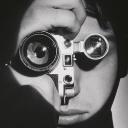Yahoo Answers is shutting down on May 4th, 2021 (Eastern Time) and beginning April 20th, 2021 (Eastern Time) the Yahoo Answers website will be in read-only mode. There will be no changes to other Yahoo properties or services, or your Yahoo account. You can find more information about the Yahoo Answers shutdown and how to download your data on this help page.
Trending News
Will Raynox DCR 250 help me it all? If yes, how?
I have Nikon D5300. Lenses I have are Nikkor 18-55, Tamron 16-300 and Nikkor 105 micro f2.8.
I am interested in macro. So should I buy this Raynox? Which lens (among the 3 I mentioned) should I use behind Raynox? Will autofocus work?
3 Answers
- FauxtonicLv 63 years ago
No, don't get the Raynox for macro. The best way to get great macro cheaply is with an extension tube.
https://www.bhphotovideo.com/c/search?ci=276&fct=f...
With the extension tube, you will still retain auto exposure and focusing. The tube does not have any lens elements, it's just a hollow tube so the image quality cannot be adversely affected as it will most definitely would be with the Raynox and its cheap uncoated lens.
Other than a true 1:1 macro lens, an extension tube is the next best way to get macro. Nikon's micro lenses are very good, but those from Tokina, Sigma and Tamron are often just as good if not better. Go to youtube and do a search for best macro lens for Nikon; there's a lot of reviews on youtube. To compare sharpness, go to photozone.de.
- keerokLv 73 years ago
For macro shots, use a macro lens. The only macro lens in your list is the 105mm Micro. It is AF-S so it will autofocus with your D5300 and best of all it has VR.
- retiredPhilLv 73 years ago
The Raynox DCR 250 is a reasonable way to explore macro photography. I use a lens reversing ring because it does not introduce another piece of glass. The Raynox fits 52mm to 67mm lenses. You can find the lens diameter on the lens. Autofocus will work since you are just adding a lens to the end of your lens.







